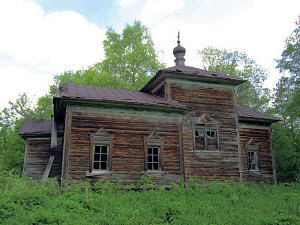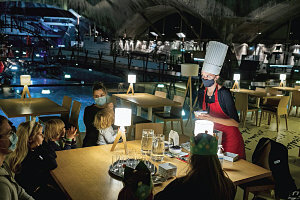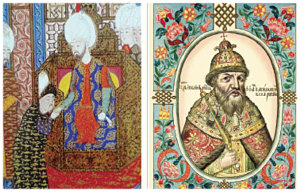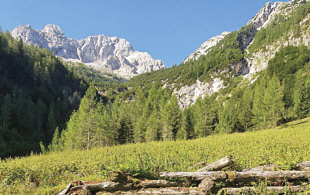Mäetagused vol. 88
Summary
-
 Chapels in the Shim Lake Veps region (late 19th and early 20th centuries)
Chapels in the Shim Lake Veps region (late 19th and early 20th centuries)
Irina Vinokurova
Leading Researcher
Institute of Language, Literature and History Karelian Research Centre, Russian Academy of Sciences
irvin@sampo.ru
Keywords: chapels, cultural landscape, folk religiosity, Shim Lake (Shimozero), Veps
In recent decades, a significant number of works have been published in Russian ethnology, devoted to the study of various forms of religiosity of the population in direct connection with certain territories in different historical periods, which has become established in science as a special concept and approach called “religious landscape”. This approach turned out to be productive in identifying the peculiarities of the spread of Orthodox traditions in a certain territory, as well as in solving modern all-Russian problems of preserving the cultural heritage of rapidly disappearing villages.
The article, based on a significant set of sources, reveals the features of the topography of chapels in the cultural landscape of the Veps of Shimozerye, Lodeynopolsky district, Olonets province, at the end of the 19th to the beginning of the 20th centuries, the motives for their construction, the dedication of chapels and their functions in the parish life of Vepsian villages. Nowadays, this deserted territory with destroyed Orthodox shrines is constantly visited by tourists.
During the study, the motives for the construction of chapels were identified, which provide an explanation for their placement in the cultural landscape of Shimozerye: distance from the church, vow, appearance of an icon, reconstruction on the site of a lost shrine, consecration of ancient burials of the ancestors of a given settlement.
The chapels were used exclusively for church services during local holidays, and played an important role in strengthening social and kinship communications and, ultimately, uniting Vepsian villages. Their use in funeral services, in comparison with other territories, has not been identified.
An analysis of the chapel dedications revealed the dominance of the names of Nicholas the Wonderworker, Elijah the Prophet, the Savior, and the Mother of God, who were considered the patrons of agriculture among the Veps. Hence, chapels as places of communication with these patrons, played an important role in ensuring the peasants’ future harvest. Single dedications to the patrons of livestock (Saints Florus and Laurus), driving livestock to the chapels, reveal another function of the chapels and the holidays associated with them – the protection of livestock.
In the past, the abandoned Shimozersky region had exeptional holidays that captured the intermingling of unique folk and Christian events, for example: the baptism of the Veps of this area and the Nativity of St. Nicholas the Wonderworker, lost in Russia; holiday of the harvest and the Kazan Icon of the Mother of God.
‘We are all slightly idealistic’: The on-site educators of museums, science centres, and other similar institutions
Helene Uppin
Doctoral Student
School of Educational Sciences, Tallinn University Curator of Education Estonian Maritime Museum
helene.uppin@tlu.ee
Inge Timoštšuk
Professor of Primary Education
School of Educational Sciences, Tallinn University
inge.timostsuk@tlu.ee
Keywords: environmental education, museum education, community of practice, education supporting sustainable development, course of study, study program, ecology of learning
The diverse and egalitarian nature of Estonian education has been attributed to the relatively high degree of teachers’ autonomy. Among other things, teachers are free to decide how and where to teach, and it is very common to teach in out-of-school settings such as museums, science centres, etc. The network of different learning sites that schools use has not been thoroughly described in previous literature and is thus somewhat hidden and vulnerable to rapid societal changes. Thus, this article aims to describe the practice and perceived role in formal education of on-site educators from museums, environmental centres, and other similar institutions of science and culture.
Seven semi-structured focus-group interviews were carried out with 27 educators. This purposeful sample was compiled with the help of experts in the field. The limitation of this sample was that it brought together representatives of outstanding providers of curriculum-related learning activities, and so it describes the practice of excellent rather than novice or un-motivated educators. On the other hand, such a sample gives us a deeper understanding of the best practices and possibilities of the field.
We found that similarly to previous results, the core practice of on-site educators involves creating, developing, and carrying out learning activities, and general organisational work. Based on the interviews, the practice of on-site educators can be described as flexible, spontaneous, collaborative, seasonal, place- and theme-specific, and project-based. Their practice is also diverse in terms of tasks both on daily/yearly basis and throughout their careers, thus illustrated by low routine and high creativity. The background of on-site educators is diverse and there are no standard career or education paths, but they can be described as strongly oriented towards constant self-development and learning, although the majority of interviewees had obtained both theoretical and pedagogical training from university and had also worked as teachers at some point in their careers. They enjoy their work and feel that it is important to connect students with nature, culture, art, or whatever their field is, to enrich their lives, support their studies, and build a better society. Thus, they often explain the value of their work through the lens of life-long learning of their students.
We conclude that out-of-classroom education in the form of field trips to museums and other similar institutions is deeply connected with curriculum and helps to achieve sustainable development goals. However, as the funding for field trips has steadily increased in the past years and there are more and more schoolteachers who have no professional pedagogical training, an increasing number of schoolteachers seem to be unprepared to support students in out-of-school learning environments. We describe and expand on good practices to support schoolteachers in out-of-school learning activities and in collaboration of museum on-site educators and schoolteachers; for example, joint training programmes for in-service schoolteachers and on-site educators (especially for supporting students with special needs and content- and language-integrated learning in the context of Russian speaking students), and career changes between schools and museums (on-site educators becoming teachers and vice versa). We documented some clever funding schemes that act as boundary objects and enhance collaboration between schoolteachers and on-site educators, but we also suggest avoiding pressuring the content of learning activities through funding, as this could hinder teacher autonomy and lead to unnecessary standardisation.
We suggest creating coherence between different ministries who govern schools, museums and providers of environmental learning activities, and involving on-site educators more in wider educational discussions. Education is much more than schools, and on-site educators should be considered as equals to schoolteachers when it comes to funding and decision-making about education.
On the reflection of the reasons for leaving the homeland in the migration narrative of Estonians from Abkhazia
Aivar Jürgenson
Senior Research Fellow
Estonian National Museum
aivar.jurgenson@erm.ee
Keywords: Caucasia, colonisation, origin narratives, status borders
When adapting to a new host country, one of the most important issues is social belonging – the question on what basis people feel a sense of belonging. This is a question of group identity. Group identity is based on the group’s shared history and especially on myths of common and special origins. In the narratives of the Estonians of Abkhazia, the main reason for emigration is the difficult economic conditions in the old homeland. These stories are recorded in the written memories and village chronicles of the inhabitants of the Estonian settlements in the Caucasus, which date back to the 19th and 20th centuries, but they can be heard orally even today, because the stories have been heard from parents and grandparents. Both in earlier writings and in today’s oral presentations, the conditions in the old homeland of Estonia are depicted as poor, sometimes quite unbearable. An important figure in these stories is an evil and arrogant German landlord who oppressed the ancestors of the settlers.
The first chapter of the article shows the historical background of the confrontation between the Estonian peasants and the German landlords in Estonia and how it was at least partially realized as an emigration movement under the influence of the peasant laws of the 19th century. The topic of the evil landlord was taken by the Estonian settlers to the settlements in Caucasus – these were stories told from personal experiences with the landlords. The formation and transmission of stories from generation to generation as founding narratives was facilitated by the opposition between Estonians and Germans in the Estonian national discourse. The second chapter focuses on the texts that reflect landlord-peasant conflicts in Estonia at the time of emigration – the texts of the leading figures of the national awakening movement in the school- and history books. These texts also influenced the developing identity of the Estonian colonists. The article then discusses the stories about the evil landlord told in various Estonian settlements on the Black Sea coast and finally the meaning of these stories in the formation of social belonging.

“I am your friend’s friend and your enemy’s enemy”: Diplomatic relations between the Muscovy and Crimean Khanate during the reign of Ivan the Terrible
Sirje Kupp-Sazonov
Lecturer in Russian Language and Translation Studies
Institute of Foreign Languages and Cultures, University of Tartu, Estonia
sirje.kupp-sazonov@ut.ee
Vladimir Sazonov
Leading Researcher, Estonian Military Academy
Associate Professor in Ancient Near Eastern Studies University of Tartu, Estonia
vladimir.sazonov@ut.ee
Keywords: Devlet-Girei, diplomatic correspondence, Ivan the Terrible, Crimean Khanate, Muscovy
The Russo-Turkish stand-off, which began under Ivan IV the Terrible, was largely motivated by the rising imperialism and ambitions of Muscovy, which the no less ambitious Ottoman sultans, who in turn were expanding their Ottoman Empire, wished to oppose in order to maintain and extend their influence also in the Black Sea, Caspian regions and the Caucasus, where Russian troops were slowly ‘infiltrating’ and to which Moscow’s foreign policy was also increasingly turning its attention. Tsar Ivan IV conquered and destroyed all the Tatar states (including Astrakhan, Kazan, the Siberian Khanate, the Nogai Horde), with the exception of Moscow, which was increasingly subjected to the Russian occupation. Although he eventually achieved military supremacy over Crimea, Ivan IV was unable to subdue Crimean Khanate. In order for Crimea to survive, the Crimean Khan had to accept in the 1580s that Crimea, already formally a vassal of the Ottomans since 1474/1475, would become even more dependent on the Ottoman Empire.
This article examines Ivan the Terrible’s eastern policy ambitions, as well as Muscovy’s relations with the khanates, especially the Khan of Crimea, and the diplomatic correspondence between the rulers (the Khan of Crimea and Ivan IV). In addition to excerpts from the letters of the various khans and the Russian tsar’s replies, we present commented translation into Estonian of a letter of 1572 from the Crimean khan Devlet-Girei to Ivan the Terrible, about a year after his raid on Moscow and just after the Battle of Molodi in the summer of 1572.
More recently, the history of Russo-Tatar-Turkish relations has shown that the existence of the Crimean Khanate in the 17th and 18th centuries depended to a large extent on the support of the Turkish Sultan, and that eventually, after a series of Russo-Turkish wars (often involving Crimea), the Russian Empire absorbed the Crimean Khanate. Admittedly, this took place 200 years after the death of Ivan IV, in 1783, when the Russian Empire was ruled by Catherine II. However, it was Ivan IV who laid the foundations for the conquest of the Tatar lands, and this was only the first episode in a series of Russian-Turkish wars and the Russian-Turkish confrontation, which in fact continues to some extent to this day.
Alexey Burykin, researcher of Uralistics: The contribution of a polyhistorian to the study of the folklore, ethnology and languages of the Finno-Ugric and Samoyed peoples
Szilárd Tibor Tóth
Estonian Lecturer
University of Tartu
szilard.toth@ut.ee, tothsz@t-online.hu
Keywords: Aleksey Burykin, Uralic languages, Khanty language, Uralic peoples, folklore, ethnology, ethnonyms, old written texts, common and proper names, etymology, kinship vocabulary, phrasal verb
The article gives an overview of the contribution of Alexey Burykin (1954–2021), doctor of philology and history, to the study of the languages, folklore and ethnology of the Finno-Ugric and Samoyed peoples. Burykin, whose total number of publications exceeds 1,300, has researched the Uralic peoples in a comparative way, in the context of other peoples; above all, the indigenous peoples of Siberia. His field of interests has included the mention of the Uralic peoples in sources, old written texts, folkloristics and ethnology of the Uralic peoples (Ob-Ugric, Samoyed and Sami folklore, Siberian shamanism), etymology of common and proper names, kinship vocabulary and the problems of the Khanty phrasal verb.
There is only one language… Interview with Mare Kõiva on the eve of her 70th birthday
Aimar Ventsel
Associate Professor of Ethnology
Institute of Cultural Research, University of Tartu
aimar.ventsel@ut.ee
Keywords: folkloristics, Mare Kõiva
“In today’s world much depends on whether you are able to develop the computer in the direction beneficial for the mother tongue or end up as a speaker of a mega-language,” Mare Kõiva, head of the Department of Folkloristics, founder and chief editor of many journals, a European and Estonian academician, summarises the conversation on the topics of the past, present and future on the eve of her jubilee.
In memoriam
Valei Kelmakov 14.01.1942 – 28.12.2023
Obituary from Natalia Kondratieva and Olga Strelkova.
News in brief
Calendar
A brief summary of the events of Estonian folklorists from December 2023 to April 2024.
Book review
A secret world beside us
The first Estonian-language approach to conspiracy theories in the history and in today’s world
Andreas Ventsel, Mari-Liis Madisson, Mihhail Lotman.
Varjatud märgid ja salaühingud. Vandenõuteooriate tähendusmaailm.
Tallinn: Postimees Kirjastus, 2023. 656 pp.
Eda Kalmre introduces and analyses the book.
 Motifs in the legends about disappeared lakes in Tolmin region
Motifs in the legends about disappeared lakes in Tolmin region
Barbara Ivančič Kutin
Research Fellow
Research Centre of the Slovenian Academy of Sciences and Arts
barbara.Ivancic@zrc-sazu.si
Keywords: Breginji valley, giant, lakes, Kobarid region, wild woman, legends, folklore, Slovenia, Tolmin region
The article discusses, from the content/motif aspect, 30 folk legends about the disappeared lakes in Tolmin region, Slovenia. The material covers different archival manuscripts and publications, mainly from Janez Dolenc’s student archive. In all the legends under study the location of the lake is specified. In addition to this, most of them feature at least one of the following motifs: emergence of settlements, existence of rings used for fastening water vehicles, water traffic, an explanation of who or what caused the disappearance of the lake and how and where it happened.